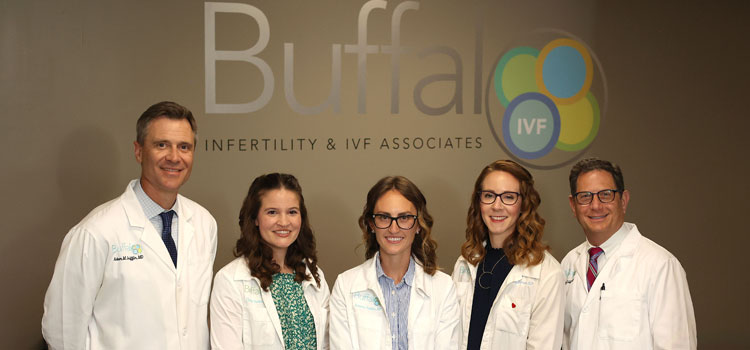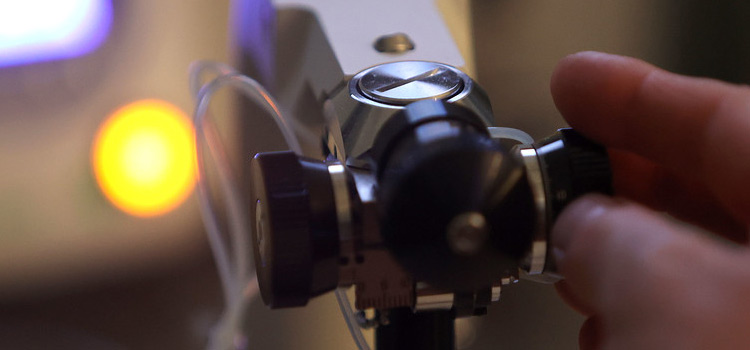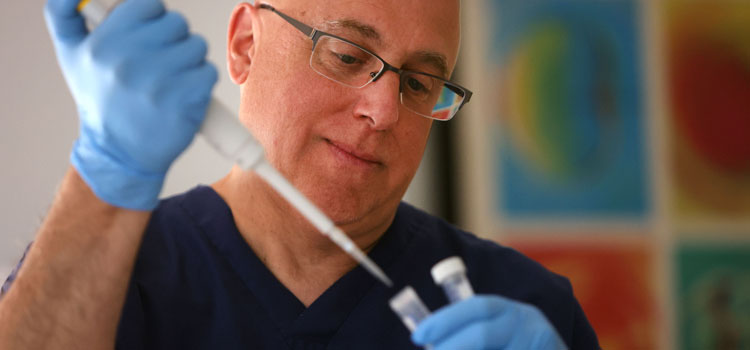Infertility Education
Endometriosis
Endometriosis is a very common condition in which the normal tissue that lines the inside of the uterus (endometrium) is found growing outside the uterus, on such areas as the ovaries, fallopian tubes, intestines, the lining of the pelvis and abdomen (peritoneum).
During the menstrual cycle, this displaced endometrial tissue grows and bleeds just as if it were inside the uterus. Unlike the normal lining of the uterus, however, it cannot be shed from the body, but instead causes inflammation, scarring, and is often associated with pain. On the ovaries, endometriosis can collect in cyst-like structures called endometriomas.
The inflammation and scarring associated with endometriosis can damage the fallopian tubes and cause changes that effect normal fertilization, transport, development and implantation of an embryo.
The amount of endometriosis that a woman has does not necessarily correlate with the amount of pain the disease can cause. For example, women with extensive disease can be pain-free, while women with mild disease can have debilitating pain for several days or weeks every month.
Diagnosing Endometriosis
True diagnosis of endometriosis requires a minimally invasive surgery (laparoscopy) to identify the growth of endometrial tissues outside of the uterus. However, findings on exam, ultrasound, and many symptoms, can be highly suggestive of the presence of endometriosis.
Frequent symptoms include:
- Pain before and during periods
- Pain with intercourse
- Infertility
- Painful urination or bowel movements with periods
- Diarrhea, constipation, nausea
Treating Endometriosis
Hormone therapy
Various medications can be used to suppress the body’s production of hormones that cause endometriosis to grow. These drugs prevent ovulation and development of the uterine lining, and are therefore not used in women who desire pregnancy right away.
Surgery
Minimally invasive surgery (laparoscopy) can diagnose and treat endometriosis. This involves small incisions in the belly button and lower abdomen through which a small camera and instruments can be passed in order to visualize and remove the abnormal tissue.
Endometriosis and Fertility
In patients who desire fertility, pregnancy can often be achieved using fertility medications and techniques that do not directly treat the endometriosis, but can help a patient overcome its effects on fertility.
Laparoscopy used to be a common part of the infertility work-up, especially for women with otherwise unexplained infertility. In recent years, this practice has become uncommon for a variety of reasons, the most important being that even if endometriosis is found and treated, the improvement in fertility is variable. In the absence of significant pain, current evidence suggests that patients that might have endometriosis be treated the same way we treat patients with unexplained infertility.
Recent evidence also suggests that even endometriomas do not necessarily require surgical management unless there is significant associated pain. Some advocate their removal if they show signs of growth over time or for cysts larger than 4 cm, but there is no consensus even amongst endometriosis experts on whether or when endometriomas should be surgically removed.
IVF and Endometriosis
In cases of more severe and extensive endometriosis, we may suggest in vitro fertilization (IVF), to remove the eggs, sperm and embryos from the inflammatory pelvic environment created by endometriosis, which has been shown to be toxic to these cells.












